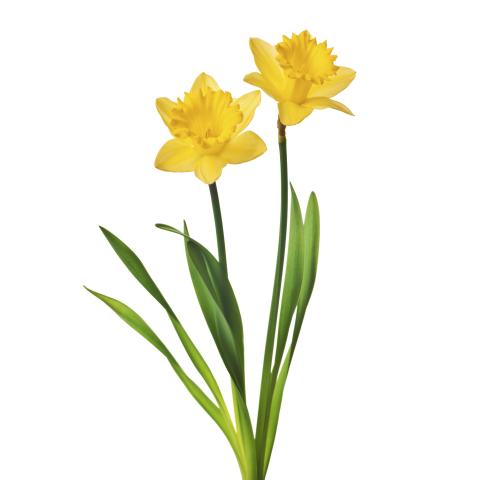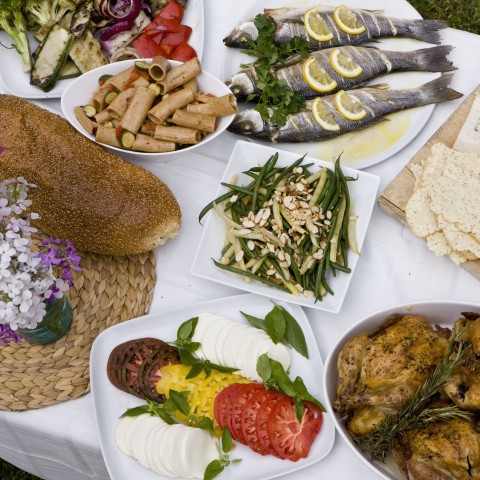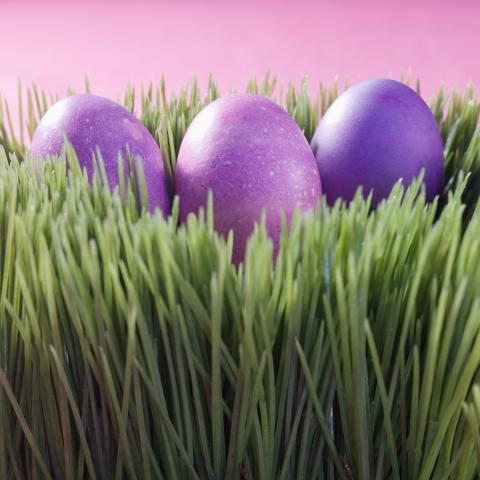The Monday after Easter (Easter Monday) is Finland’s largest celebration during the Easter week. It’s a day of Finnish Easter pudding and more delicious traditional Finnish Easter food. However, it’s also a day of great religious significance for Finland’s Christian population. From its more religious celebrations to Easter witches, Easter in Finland is a delight!
Learn about Finland Easter traditions and more information about Easter in Finland with FinnishPod101.com! We hope to make learning about Finnish Easter both fun and informative; after all, cultural knowledge is a vital aspect of learning any language! So let’s get started.
1. What is Easter Monday in Finland?
Easter, which is celebrated in-between March and April in Finland, is the oldest and most important Christian holiday.
Easter celebrates the resurrection of Jesus, but many Easter traditions of the Finns were originally pagan and are associated with the longer days. Easter week, which is also known as Silent Week, starts with Palm Sunday. The Easter holidays consist of Good Friday, Easter Sunday, and Easter Monday.
2. When is Easter Monday?
The date of Easter Monday in Finland varies from year to year. For your convenience, here’s a list of this holiday’s date for the next ten years.
- 2019: April 22
- 2020: April 13
- 2021: April 5
- 2022: April 18
- 2023: April 10
- 2024: April 1
- 2025: April 21
- 2026: April 6
- 2027: March 29
- 2028: April 17
3. Reading Practice: How is Celebrated?
How is Easter celebrated in Finland? Read the Finnish text below to find out (and find the English translation directly below it)!
—
Palmusunnuntaina lapset pukeutuvat pääsiäisnoidiksi ja lähtevät naapurustoon virpomaan, mukanaan koristelemansa värikkäät pajunoksat. Virpoja toivottaa onnea ja terveyttä pajunoksia heiluttamalla ja lausumalla samaan aikaan virpomislorun. Palkaksi pienet noidat saavat yleensä suklaamunia tai muita makeisia. Koristellut pajunoksat symboloivat palmusunnuntain palmunlehviä ja kevään saapumista. Pajunkissoja ja koivunoksia laitetaan myös kodeissa maljakkoon esille, sekä rairuohoa kasvatetaan kevään ja elämän juhlistamiseksi.
Mämmi on kaikista perinteisin suomalainen pääsiäisherkku. Se on imellettyä, makeaa ruispuuroa, joka valmistetaan ruismaltaasta ja ruisjauhoista. Mämmi tarjoillaan yleensä kuohukerman, maidon tai vaniljajäätelön kanssa. Pasha puolestaan on rahkajälkiruoka, joka on levinnyt suomalaisten pääsiäispöytiin ortodoksien perinteestä. Pääsiäiseen kuuluvat myös pieniä leluja sisältävät suklaamunat ja pääsiäisrakeet. Suolaisia herkkuja ovat erilaiset lammas- ja kalaruoat, verimakkara ja uunijuusto.
Aiemmin uskottiin, että juuri pääsiäisenä hyvät ja pahat voimat taistelevat keskenään. Savun ja kipinöiden uskottiin karkottavan noitia ja pahoja henkiä, joten pääsiäislauantaina sytytettiin suuria rovioita, eli pääsiäiskokkoja.
—
On Palm Sunday, children dress up as Easter witches and go around the neighborhood to do virpominen, carrying colorful willow branches they have decorated themselves. The person conducting the virpominen, known as the virpoja, gives wishes of happiness and good health while waving the willow branches, and reciting a rhyme called virpomisloru, to the receiver. As a reward, the little witches usually receive chocolate eggs or other sweets. The embellished willow branches symbolize the palm leaves from Palm Sunday and the arrival of spring. Willow catkins and birch twigs are also placed in a vase in homes, and Easter rye grass is grown to celebrate spring and life.
Mämmi is the most traditional Finnish Easter delicacy. It is malted, sweet rye porridge which is prepared from rye malts and rye flour. Mämmi is usually served with whipped cream, milk, or vanilla ice cream. Pasha, in turn, is a curd dessert that has spread to Finnish Easter tables from the Orthodox tradition. Chocolate eggs that contain small toys and Easter drops are also a part of Easter. Savory delicacies include different kinds of lamb and fish dishes, blood sausage, and baked cheese.
It was previously believed that during Easter, good and evil forces would fight each other. Smoke and sparks were believed to expel witches and evil spirits, so large stakes and Easter bonfires were lit on Easter Saturday.
4. Additional Information
Do you know any other names the “Holy Week” can go by?
Holy Week is also known as a Silent Week or Torment Week, and each day has its own special name, Palm Sunday, Beam Monday, Holy Tuesday, Holy Wednesday, Maundy Thursday, Good Friday, Holy Saturday, Easter Sunday, and Easter Monday.
5. Must-know Finnish Vocab for Easter Monday
Here’s some vocabulary you should know for Easter Monday in Finland!
- Tipu — “Chick”
- Kristinusko — “Christianity”
- Toinen pääsiäispäivä — “Easter Monday”
- Ilmestyä — “Appear”
- Opetuslapsi — “Disciple”
- Vapaapäivä — “Day off”
- Juhla-ateria — “Festive dinner“
- Narsissi — “Daffodil”
- Rairuoho — “Ryegrass“
- Koivunoksa — “Birch twig”
- Ylösnousemus — “Resurrection”
To hear each word pronounced, check out our Finnish Easter Monday vocabulary list. Here, you’ll find each word accompanied by an audio of its pronunciation.
Conclusion
What do you think about the Finnish celebration of Easter? Are Easter celebrations similar in your country, or different? Let us know in the comments!
To learn even more about Finnish culture and the language, visit us at FinnishPod101.com. We offer an array of insightful blog posts, free vocabulary lists, and an online community to discuss lessons with fellow Finnish learners. You can also take advantage of our MyTeacher program, and learn Finnish with your own personal teacher, by upgrading to a Premium Plus account!
All of your efforts will soon reap rewards, and you’ll be speaking like a native in no time! And we’ll be here to teach you and support you all the way there! Best wishes and happy Easter (be sure to enjoy some Finnish chocolate Easter eggs for us)!













